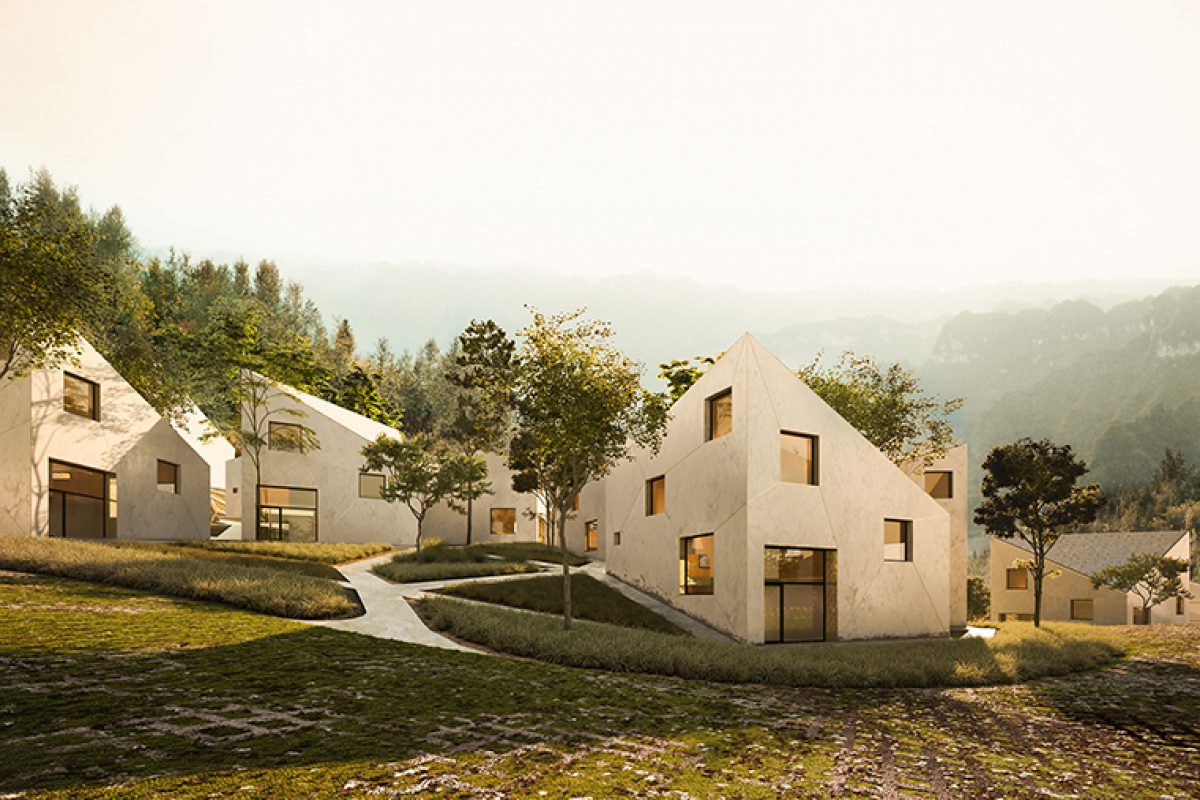Dehan Village, the Mountain Resort designed by AQSO Architects Office in Jishou, China

This hospitality complex located near Jishou, in the Xiangxi Tujia and Miao Autonomous Prefecture of Hunan, enjoys an outstanding location with views towards the valley crossed by the Aizhai Bridge and the Deben Scenic area. AQSO arquitectos office explain us the development,
The resort includes a series of luxury villas carefully integrated with the landscape, a clubhouse with services, amenities, ballroom, tearooms, conference centre and administrative facilities as well as a spectacular restaurant on the highest spot of the mountainous scenery.

The master plan blends the flexibility required by the rugged terrain with a modular system able to rationalise the arrangement and construction of the buildings. The hilly land is therefore transformed into an orderly three-dimensional mesh made of squares and triangles, able to adapt to the different levels. This simplified net of points provides a circulation system of pathways for accessing the villas and a pattern that ensures all of them enjoy interesting views, privacy and have an optimum orientation, despite the density of the intervention.
In contrast with the systematic arrangement of the landscape and buildings, the road network adapts to the terrain with a sharper language, dividing the plot into clusters while minimising cuttings and embankments. The roads are intended for electric cars and pedestrian use and are paved with a porous surface that blends with the softscape.
The terrain is hence reconstructed into a sort of undulating origami pattern that pixelates the original landscape combining architecture and nature. The triangular polygons of the mesh become gardens with native vegetation, carefully curated to provide a patchwork of different tones and textures, adding variation and uniqueness to every corner of the village.

The buildings extend the language of the landscape into the architectural realm. Each villa keeps a square proportion while the diagonal pitch roof introduces triangles sheathings. The result is a captivating settlement, a charming village where repetition and randomness generate a human-made environment based on natural rules, a distinct balance between disorder and harmony.
The internal layout of the houses is arranged around a central core with a spiral staircase connecting three levels. To minimise the number of typologies and to keep the construction system modular and cost-effective, the space planning is designed to fit with any orientation and terrain condition.
The day-use spaces are located on the lower floors, while the ensuite bedrooms enjoy the high ceiling under the pitched roof.

The monolithic massing aspect of the villas is reinforced with the selection of materials and the facade design. White render with brass inserts are used to clad the walls, while a warm inner timber lining is noticed through the informal disposition of openings. This contrast offers a particular sculpture quality to the homes, pure and sober outside while cosy, comfortable and warm inside.
The other buildings of the scheme share the same language but introducing subtle variations to express their function while creating a dialogue with the rest.
The block of apartments become a bigger version of the villas but keeping the same arrangement and size of openings. The club-house and restaurant, on the other hand, extend to occupy a more significant section of the base landscape grid so the buildings can host public functions, but their top has individual glazed pavilions resembling the villa's pitched roofs.
These translucent tents stand out from the rest of the village, becoming gathering viewpoints that, like enchanting lanterns, can be seen at night from the quiet innermost alleys of the resort. 

Source: AQSO Arquitectos
Read more news related AQSO Arquitectos published at Infurma
Visit the AQSO Arquitectos website
News Infurma:
Online Magazine of the International Habitat Portal. Design, Contract, Interior Design, Furniture, Lighting and Decoration
